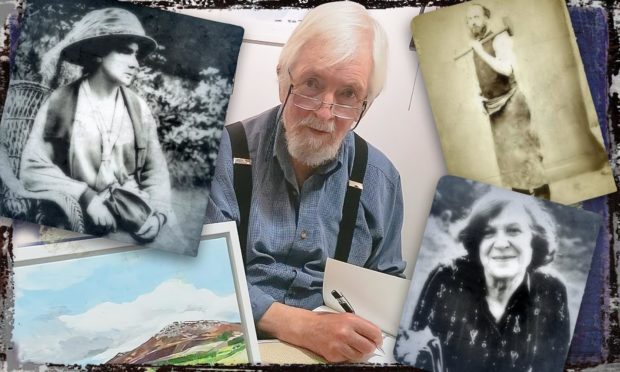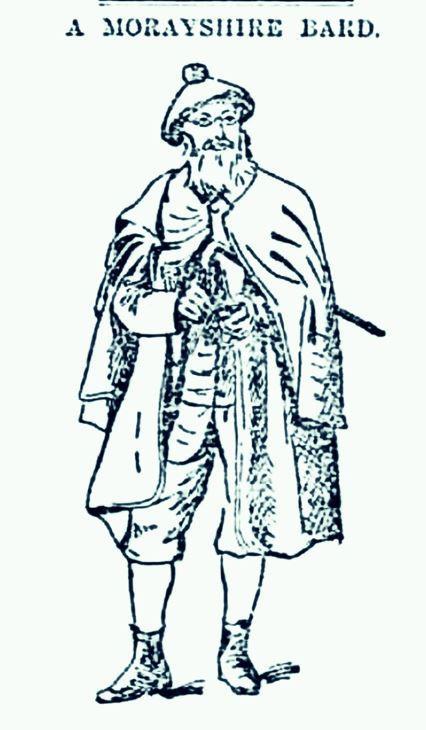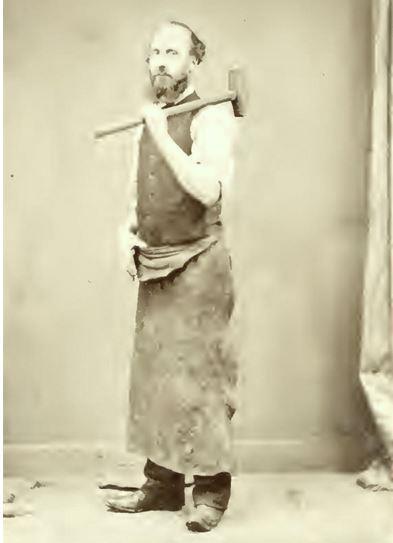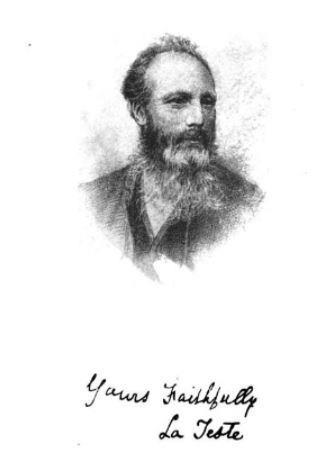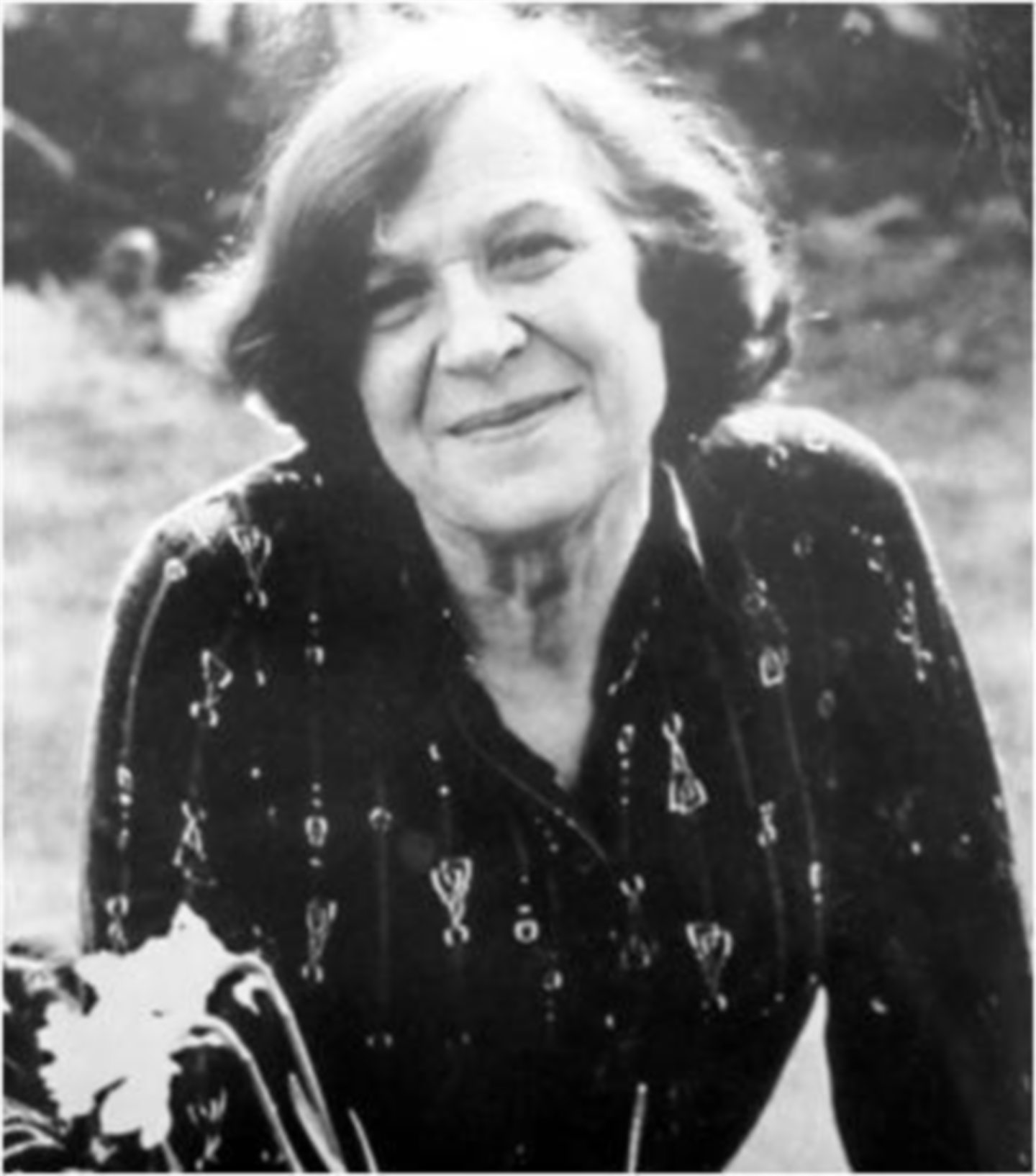A new anthology of poetry sheds eye-opening light on the lives of Moray folk over more than five centuries.
Poetry of Moray 1448-1984 has been gathered and researched by Elgin man Richard Bennett, a former English teacher.
He was switched on to the depth and breadth of the Moray bards when he came across a 1930 lecture entitled The Muse of Morayland, given by Rev Graham Warner, assistant minister of St Giles Church in Elgin.
What struck him first was the word Morayland, suggesting ‘a realm, a people, an expansive landscape, rich in fame and story… feeling of pride and love.’
He was soon to find out there was a lot more to it than first meets the eye.
That was a quarter of a century ago, and it was lockdown that finally brought the book out of the musing stage and into existence.
Richard starts with Richard Holland’s animal fable The Buke of Howlat, a political and moral satire composed at Darnaway Castle near Forres, and ends with Jessie Kesson’s poem The Spell-Binders.
Rich stew
In between is a rich stew of verse mostly in Scots or Doric, from educated scholars and aristocratic ladies to self-taught itinerant beggars and men and women of the Victorian and Edwardian middle classes.
For Richard, one poet particularly stands out, not only for his facility with verse, but for his somewhat chequered and tragic life.
William Hay Leith Tester (1829-1892) started out as a page to Lady Abergeldie of Westerton House in Pluscarden.
At one point he found himself in southwest France at La Teste-de-Buch, prompting him to adopt La Teste as his nom-de-plume.
Later La Teste described himself as a ‘hammerman’, labouring at the lowest levels of society.
Richard concludes that alcoholism took over and drove him downwards to the point that he actually aspired to enter the poorhouse.
He succeeded in making money from his verse, profiting from a period in the mid to late 19th Century during which newspapers contributed to a flowering of poetry by working men by printing and paying for their work.
Star poet
La Teste became the star poet of Poet’s Corner in the Elgin Courant for a quarter of a century, so prolific in the local press that he must have been quite a household name.
Among his followers was one Mr AG Murdoch of Glasgow, who wrote in the 8th edition of La Teste’s poetry:
“La Teste’s writings, like the verses of all poets in humble life, are unequal in interest and merit.
“He has great facility of composition, however, and if he has written much, he has also, it must be conceded, written well.
“His career has, from the first, been a varied and somewhat chequered one, and for years he has struggled through poverty and despair in the ceaseless exercise of his legitimate function of verse-making.”
Richard says it’s clear La Teste wasted nearly every penny he ever made, mostly through drink.
“He and his family – he married twice – occupied a room in the most degraded of all High Street closes, known as Little Hell.”
A sense of humour was vital in the circumstances. Here’s La Teste’s epitaph to be used in the event of his wife’s death:
Here lies Bell Clark in her clean linen sark,
Wha in life, Sir, ’twas thocht was a trig ane;
But noo in her pride, she has flown from my side
And left Little Hell for the Big ane.
Richard said: “Many of his poems glorify the wonders of whisky; a few depict, movingly, the effects of excessive drinking.
The poorhouse
“By his early forties, he had become an inmate, for the first time, of the Morayshire Union Poorhouse in Bishopmill – Peter’s Palace.”
La Teste writes about Peter’s Palace:
I canna write nae mair – I’m greetin –
Ilka cloud as black as death;
The twa bit bairns like lammies bleatin,
For they’re caul and hungry baith!
Peter get yer Palace ready –
Tak us aa tae Bishopmill –
We’re hungry, haggard, nakit, needy!
“Be thou our good St Peter still.”
His observations of his poverty-ridden layer of society are vivid and wry.
In Sunday Mornin Woman he describes the misery and degradation of an old woman, raddled through drink and dressed in rags, looking to scrounge some pennies for some hair of the dog:
She steered her frail yacht towards mysel ower the street,
She noddit, peer body, an was maist like to greet,
And in accents o woe, which I cudna weel thole,
Quo she – ‘Willie, man, wad ye succour a soul?
Illegal shebeen
Willie commiserates – ‘Fellow-feelins, ye ken, make us wonderful kind’ – and takes the woman to an illegal shebeen, at which he feels a little guilty, then takes it upon himself to advise her that the kirk three times on Sunday and abstinence are her only cure.
But his further advice soon debunks this:
An mind whan ye swallow a ‘nip’ on the sly,
As the maist o saunts do, whilk they canna deny,
Chew a moufu o garlic, an then, by my faith,
They’ll be bold wha wad dare tak a smell o yer breath.
Amid the tragedy of his unflinching observations of life in the gutter, La Teste’s A.B.C. of Notable Places brings humorous relief, from
Aberdeen, auld Scotlan’s Grinite City
Lang famous for Devanha’s aque vitee
through, intriguingly:
Elgin, whilk a parson ca’d in sorrow,
Hoo horrible! A – ‘Sodom an Gomorrah.’
to:
Zanzibar, whaur Livingstone, some think,
Kept a slave-market inn, an selt Scotch drink.
He produced 10 volumes of verse, with collections of his work still available to buy today.
In October 1865 his latest offering was ‘handsomely printed on toned paper, containing upwards of 200 pages’ and retailed at 2/-.
The Banffshire Gazette, in its review, said it was a book for all classes, stating “no-one can read some of the verses without a feeling of wonder at the fluent style, the evident ease in versification and the occasional pawky humour of the writer”.
‘Nadir of rubbish’
In the 20th Century poets like Hugh MacDairmid were contemptuous of the working man’s poetry movement, of which La Teste was part, calling it the ‘nadir of rubbish’.
But Richard says it’s wrong to dismiss La Teste and the many other working men of Moray who wrote poetry to add to their meagre living.
“They’re political, they write of love, loss and death, they’re humorous, they entertain people in a way we can’t imagine today and must be seen in the context they were living in.
“You can see the flaws and self-destructive thread in La Teste’s poetry, but it’s a remarkable achievement.
“How different might it have been if he had had a different education?”
Richard discovered that by his mid-fifties La Teste was nearly blind.
“Further admissions to Peter’s Palace followed until he died there after a period of severe illness in 1892.
“As Poet Laureate of Lodge Kilmolymock, he was buried at the Cathedral with full Masonic honours.”
Poets of international standing
Well-known poets of international standing feature in Richard’s anthology, including John M Caie, Mary Symon, Andrew Young and Jessie Kesson.
Richard Bennett was born and brought up in Moray and educated at Elgin
Academy and at the University of Aberdeen.
He started his career as an English teacher in Dundee before moving to Milne’s High School, Fochabers, and, later, to Elgin Academy.
Poetry of Moray 1448 to 1984 is available at Waterstones and Yeadons in Elgin and at Spey Books.
You might enjoy:
The ceilidh that changed the face of Scottish folk music
84-year-old unsung hero of the Scots language scoops award for his talents
